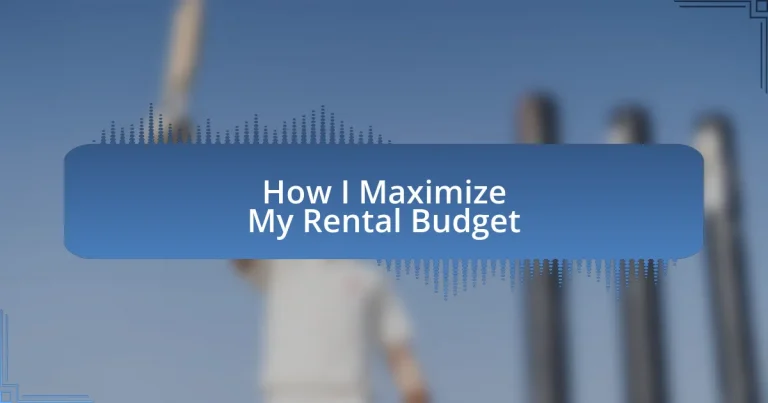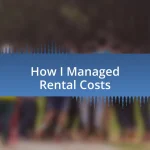Key takeaways:
- Allocate no more than 30% of your monthly income for rent to maintain financial breathing room.
- Assess your rental needs by distinguishing between must-haves and nice-to-haves, and consider the layout and location of the property.
- Utilize multiple sources for comparing rent prices, including online listings and local real estate agents, to get the full picture.
- Explore financial assistance resources to alleviate rental costs and connect with supportive community programs when needed.
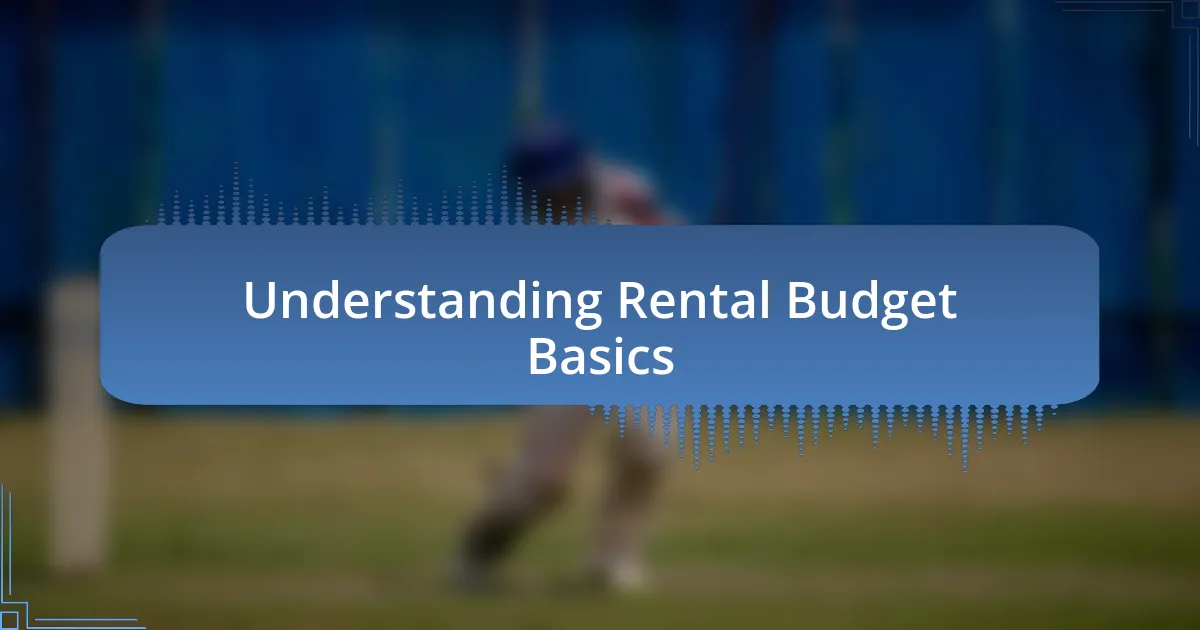
Understanding Rental Budget Basics
When diving into the rental budget basics, it’s essential to start by determining what you can realistically afford. Personally, I remember the early days of my budgeting journey, feeling overwhelmed by how many factors played into housing costs. Have you ever faced that same confusion? I learned that a good rule of thumb is to allocate no more than 30% of your monthly income for rent, which allows some breathing room for other expenses.
Exploring the fixed and variable costs can also create a clearer picture of your budget. Fixed costs are those that don’t change, such as rent and insurance. Variable costs, like utilities and groceries, tend to fluctuate. One time, I was blindsided by a skyrocketing utility bill because I hadn’t considered those additional expenses. Keeping a close eye on both types helped me avoid similar surprises in the future.
Lastly, don’t forget to incorporate savings or unexpected expenses into your budget. I once faced an emergency home repair that threw my finances for a loop. By planning for savings, I learned to cushion my budget against such surprises, making the entire rental experience much less stressful. How do you approach saving within your rental budget? It’s worth reflecting on how a little preparation can lead to big peace of mind.

Assessing Your Rental Needs
When it comes to assessing your rental needs, I find it crucial to list out your must-haves versus nice-to-haves. For instance, I once dreamt of having an in-unit washer and dryer, thinking it would be a game changer for my busy lifestyle. However, I later realized that being within walking distance to a grocery store was a greater priority for me, as it saved time and convenience. What are your non-negotiables when searching for a rental?
Next, consider the size and layout of the space you need. I remember moving into a studio apartment that I thought would be just fine, but I quickly found myself cramped and longing for more breathing room. Assessing the number of bedrooms, bathrooms, and communal areas can prevent the regret of settling for a space that feels restrictive. Have you thought about how your living situation impacts your daily routine?
Lastly, location is more than just a zip code; it can drastically affect both your lifestyle and budget. I once overlooked the importance of proximity to public transport, and that decision cost me time each day commuting. Reflecting on your needs for schools, workplaces, and recreational spaces can steer you toward a more fulfilling rental experience, ensuring you have access to all the amenities that enhance your quality of life.
| Rental Need Category | Examples |
|---|---|
| Must-Haves | Proximity to work, pet-friendly policies, essential appliances |
| Nice-to-Haves | Modern finishes, extra storage space, amenities like a gym |
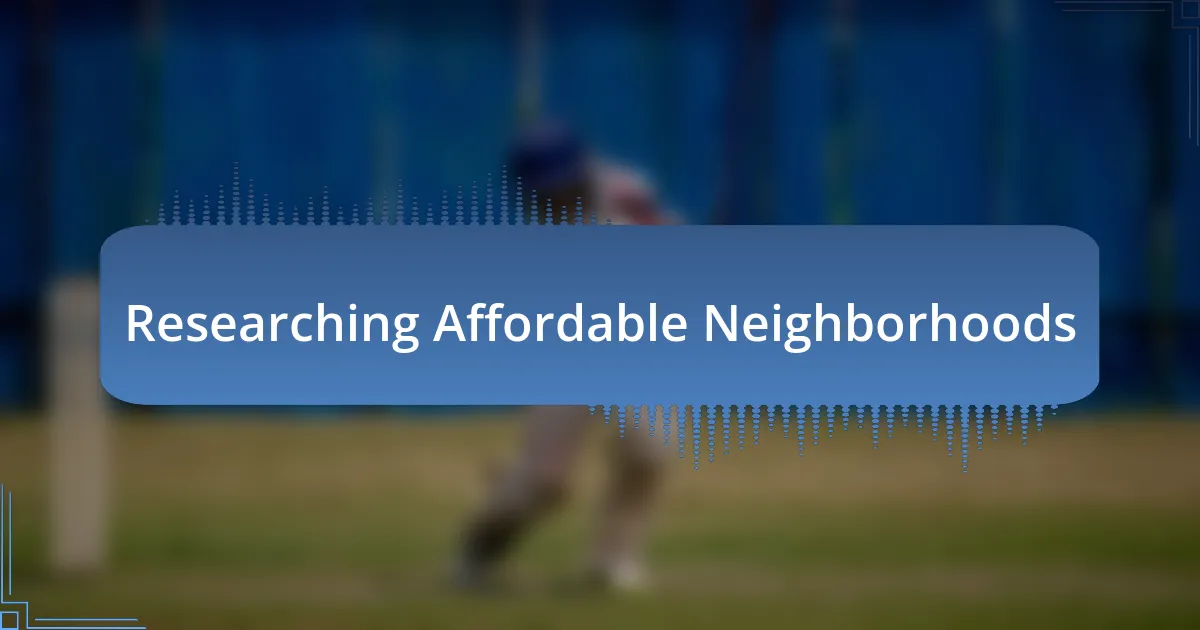
Researching Affordable Neighborhoods
When diving into the world of affordable neighborhoods, the first step is to dig deep into local amenities and the overall atmosphere. I remember visiting a neighborhood that seemed perfect on paper, but once I was there, the lack of nearby parks and coffee shops made it feel isolated. It’s important to explore the energy of these areas through firsthand experiences, as this can give you a real sense of whether the neighborhood fits your lifestyle.
Here are some factors I consider essential when researching neighborhoods:
- Public transport accessibility: Is it easy to get around without a car?
- Safety: Check local crime rates and speak to residents if possible.
- Community vibe: Are there events or activities that foster a sense of belonging?
- Local amenities: Look for proximity to grocery stores, schools, and healthcare facilities.
- Future developments: Are there any upcoming projects that could enhance or detract from the area’s appeal?
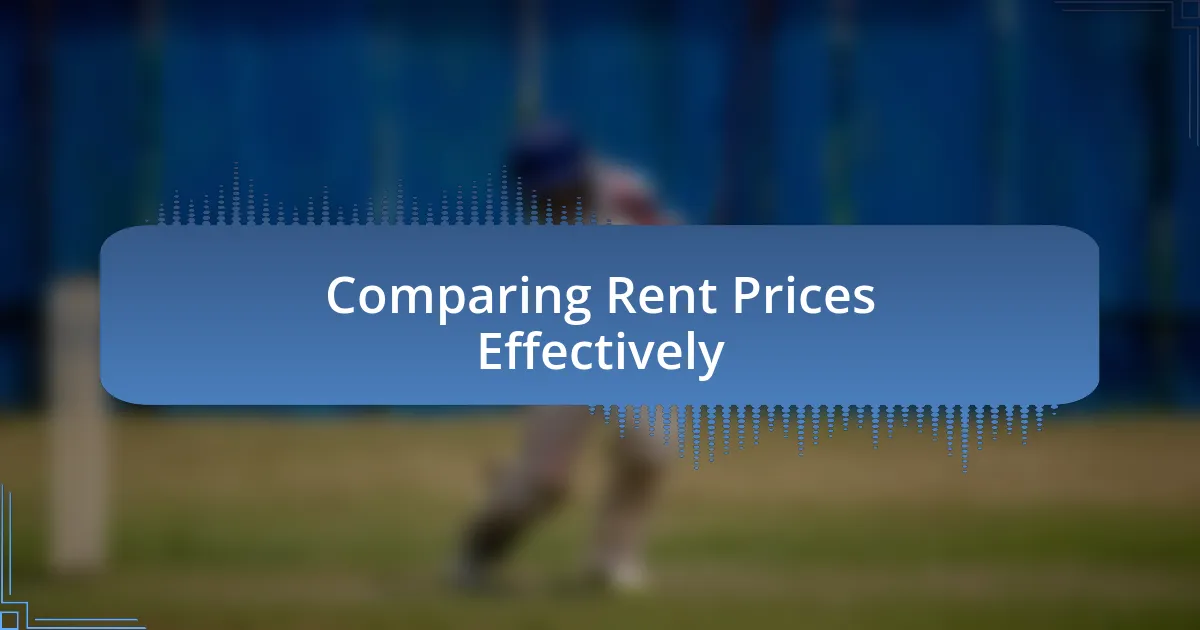
Comparing Rent Prices Effectively
When comparing rent prices, I always start by gathering data from multiple sources. Websites like Zillow and Craigslist can provide a good baseline, but I often find it helpful to reach out to local real estate agents as well. They often have insights that online listings may not divulge, especially regarding the rental market trends.
I’ve encountered situations where a seasoned agent pointed out that a seemingly high-priced apartment had unseen value, like recently renovated amenities or utilities included in the rent. This made me question: Are you purely focusing on the price tag, or are you considering the full picture? It’s essential to think beyond the numbers and assess what you’re actually getting for your money.
Utilizing a spreadsheet to compare key factors can also enhance your decision-making process. I once laid out expenses side by side, factoring in square footage, amenities, and even commuting costs. This visual representation helped me identify which options really fit my budget and lifestyle. Have you tried this method? It can transform a confusing array of figures into clear choices, making the rental hunt less overwhelming.
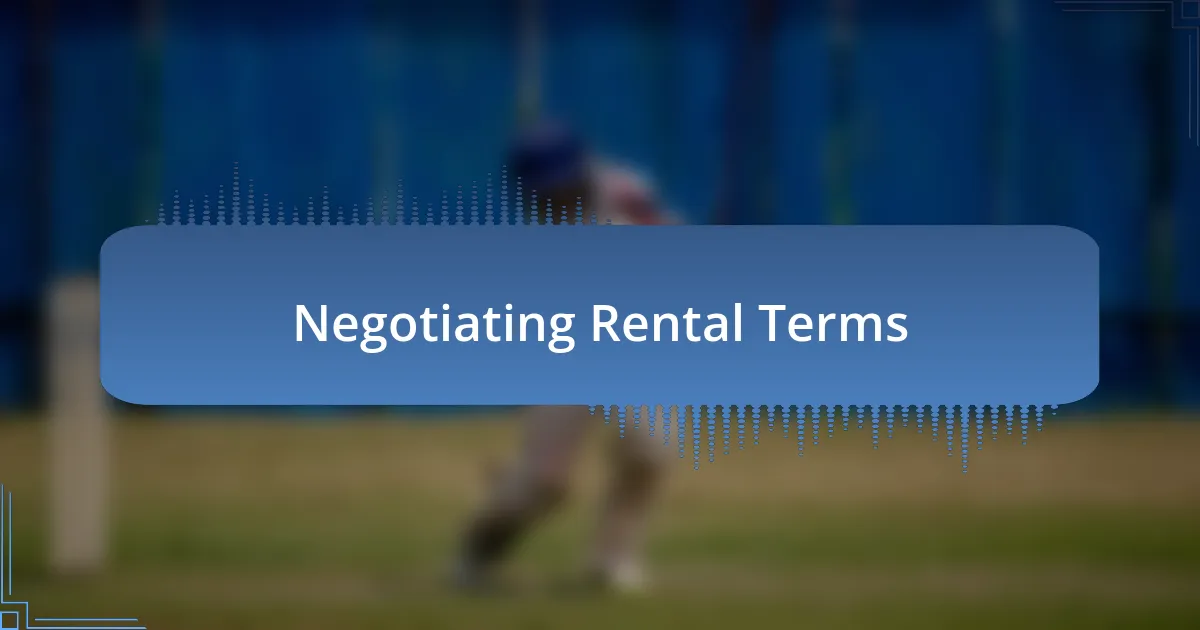
Negotiating Rental Terms
When it comes to negotiating rental terms, my first step is to build a rapport with the landlord or property manager. I remember one instance where I casually inquired about the reasons behind the rental price; it opened up a conversation that ultimately revealed their flexibility on the lease duration. If I hadn’t asked, I might have settled for less favorable terms.
Being prepared with market research can give you a significant edge during negotiations. I once walked into a rental discussion with data on similar properties in the area, which allowed me to confidently propose a lower rent. It struck me then how a well-researched argument can not only justify a request but also demonstrate to the landlord that you are a serious and informed tenant.
Lastly, don’t shy away from asking for perks beyond the monthly rent, such as covered utilities or waived pet fees. In a previous rental negotiation, I boldly asked for a discount on the security deposit, and much to my surprise, the landlord agreed. This taught me a valuable lesson: being proactive and specific in your requests can yield better terms that really lighten your financial load.
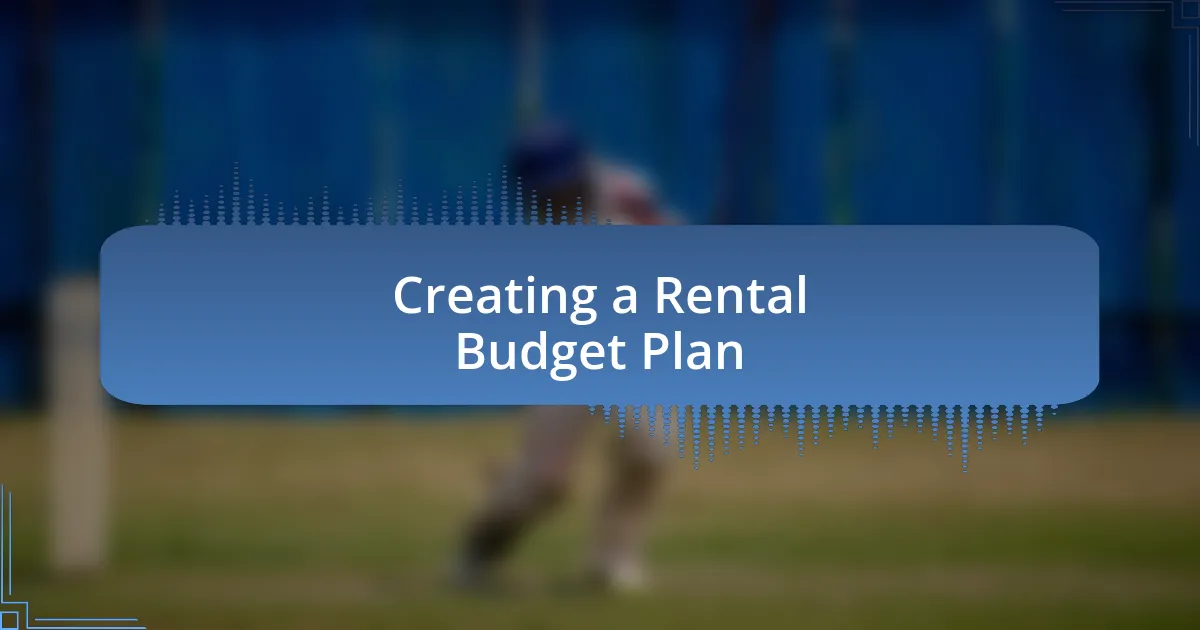
Creating a Rental Budget Plan
Creating a rental budget plan involves a careful assessment of your income and expenses. I often start by making a list of all my monthly obligations, which helps me see exactly how much I can comfortably allocate towards rent. Have you ever found yourself surprised at how many little expenses can add up? By detailing everything from groceries to transportation, I gain clarity on what’s realistic for my rental budget.
Next, I recommend establishing a clear percentage of your income to dedicate to rent. In my experience, sticking to about 30% has worked well for me, allowing me to maintain a balanced lifestyle without constant financial stress. It’s a guideline I follow religiously, ensuring I never overextend myself while still finding a comfortable place to call home.
Finally, I like to set aside a portion of my budget for unexpected expenses. Renting can bring unexpected costs—like maintenance or utilities—that can quickly derail your finances. When I first started renting, I learned this the hard way. Now, I include a buffer in my plan, and it gives me peace of mind knowing that I’m prepared for whatever comes my way. Creating this level of financial awareness significantly reduces my stress and makes the renting experience much more enjoyable.
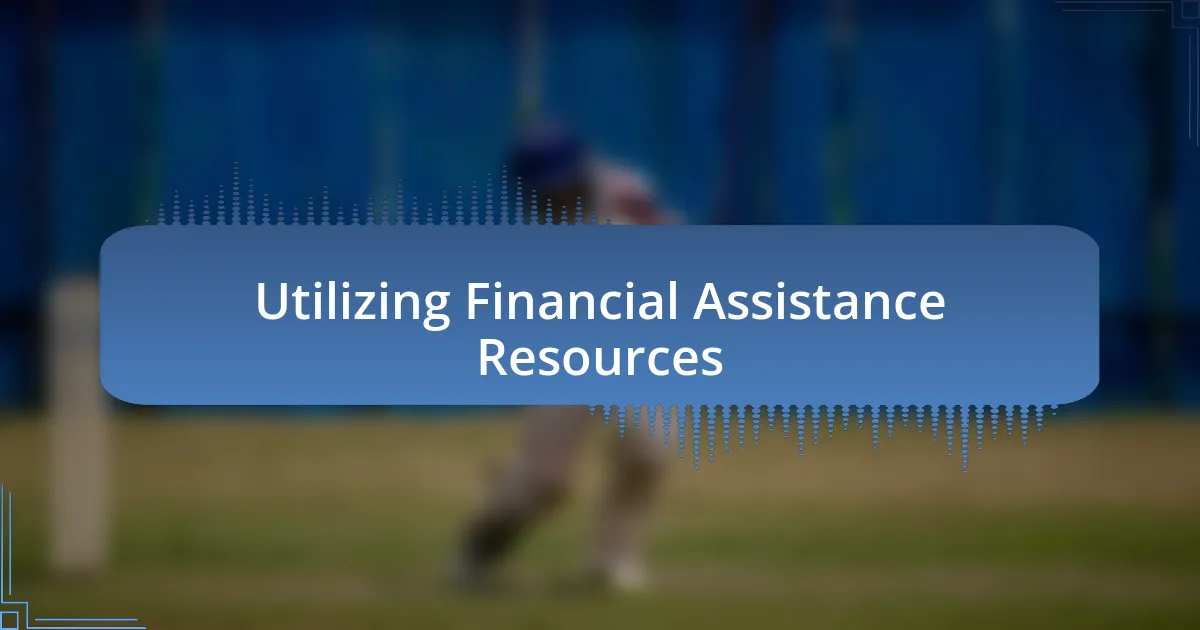
Utilizing Financial Assistance Resources
Utilizing financial assistance resources can genuinely alter the landscape of your rental budget. I remember when I first discovered local housing assistance programs; it felt like finding a hidden treasure. These programs, often funded by government agencies or non-profit organizations, can help subsidize rent or provide resources for security deposits. Have you ever thought about how a little financial help could make a substantial difference in your living situation?
Applying for assistance might seem daunting, but my experience has shown it’s often straightforward and worthwhile. I once enrolled in a rental assistance program that not only gave me relief but also connected me with financial education resources. This kind of support is especially critical for those facing unexpected circumstances, like job loss or medical emergencies. It may feel like a leap, but how often do we let pride hold us back from securing the stability we deserve?
Don’t overlook community resources like local churches or charitable organizations, which can sometimes provide one-time rental assistance or emergency funds. I’ve seen friends receive invaluable help in times of crisis by reaching out to these community pillars. In those moments of uncertainty, having that support can really remind us that we’re not alone in navigating the complexities of financial planning. It’s all about taking that first step toward seeking help when it’s needed most.
